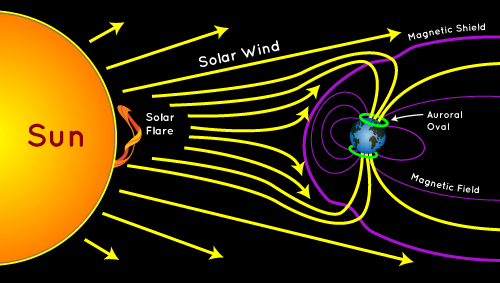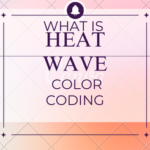Auroras light up the sky

Yesterday a series of solar flares and coronal mass ejections hit Earth’s magnetic field and caused a geomagnetic storm and there have been reports of auroras.
LEARNING FROM HOME/ WITHOUT CLASSES/ BASICS
If you’re ever near the North or South Pole frequently there are beautiful light shows in the sky. These lights are called auroras. If you’re near the North Pole, it is called an aurora borealis or northern lights. If you’re near the South Pole, it is called an aurora australis or the southern lights.
The Sun sends us more than heat and light; it sends lots of other energy and small particles . The protective magnetic field around Earth shields us from most of the energy and particles. But the Sun doesn’t send the same amount of energy all the time. There is a constant streaming solar wind and there are also solar storms.
During one kind of solar storm called a coronal mass ejection, the Sun burps out a huge bubble of electrified gas that can travel through space at high speeds. When a solar storm comes toward us, some of the energy and small particles can travel down the magnetic field lines at the north and south poles into Earth’s atmosphere. There, the particles interact with gases in our atmosphere resulting in beautiful displays of light in the sky. Oxygen gives off green and red lights. Nitrogen glows blue and purple.
Solar flares–
Solar flares are powerful bursts of energy that originate from the Sun. They occur when the Sun’s magnetic field lines become stressed and break, resulting in massive explosions of energy from the Sun.
A solar flare is a tremendous explosion on the Sun that happens when energy stored in ‘twisted’ magnetic fields (usually above sunspots) is suddenly released.
This energy is made up of charged particles, such as protons and electrons which travel through space at extremely high speeds. When these particles reach the Earth, they interact with our magnetic field and atmosphere, resulting in a variety of effects. These effects can be seen in the form of auroras, radio blackouts, disruptions to satellites, and power grid failures.
Superflares are very strong explosions observed on stars with energies up to ten thousand times that of typical solar flares. In a matter of just a few minutes they heat material to many millions of degrees and produce a burst of radiation across the electromagnetic spectrum, including from radio waves to x-rays and gamma rays.
Solar flares are different from ‘coronal mass ejections‘ (CMEs), which were once thought to be initiated by solar flares. CMEs are huge bubbles of gas threaded with magnetic field lines that are ejected from the Sun over the course of several hours. Although some are accompanied by flares, it is now known that most CMEs are not associated with flares.
If a CME collides with the Earth, it can excite a geomagnetic storm. Large geomagnetic storms have, among other things, caused electrical power outages and damaged communications satellites.
Solar flares, on the other hand, directly affect the ionosphere and radio communications at the Earth and also release energetic particles into space.
A magnetic field is generated when electric charge carriers such as electrons move through space or within an electrical conductor. The standard SI unit for magnetic field is the Tesla.







0 Comments